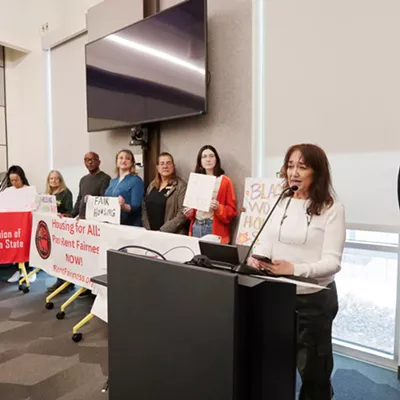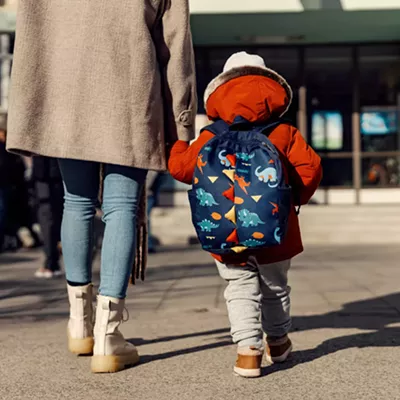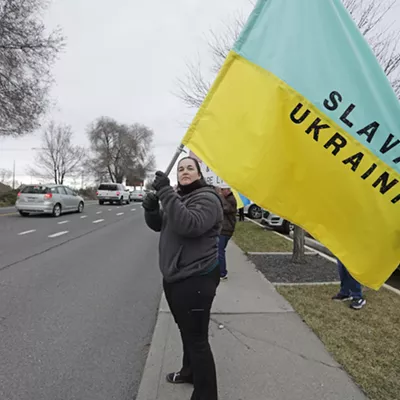Jim Eyman is at it again. Hated by some and heralded by others, the man behind last year's I-695, which cut everybody's license fees to a flat $30 and called for voter approval of any state tax and fee increases, is backing two new initiatives on November's ballot.
If voters pass I-722 -- also known as the "Son of I-695" -- vehicles would become exempt from property taxes, the tax and fee increases that were passed in late 1999 by a frazzled legislature trying to make up for the anticipated budget cuts would be nullified and future property tax hikes would be limited.
"It just says that all those tax and fee increases imposed in the end of 1999 without voter approval would be invalidated," says Eyman, who sponsors the initiative together with Ray D. Benham and Leo J. Fagan. "It would also keep property tax increases in the future to 2 percent or less."
After I-695 passed, the opposition continued to point out how the initiative depleted state coffers of money earmarked for public transportation and some health services. State colleges also suffered budget cuts. At one point, the legality of the initiative was also questioned, and even though the state Supreme Court still has to decide if the initiative was legal, the legislature went ahead and codified the measure anyway. Nonetheless, Eyman is tired of all the second-guessing that's been going on.
"This is a chance to reaffirm I-695," he says. "For the last year, there's been a lot of rewriting history, so after a year of this garbage, we're asking 'Are you still with us? Do you like the direction we are going?' "
Eyman's second initiative this time around is I-745, which calls for 90 percent of transportation funds -- including transit taxes -- to be spent on road construction and improvement. Initiative 745 would also require transportation agency performance audits and make road construction and maintenance sales tax-exempt.
Eyman says the performance review is a big part of I-745, and it's necessary to keep government from wasting taxpayers money.
"The message of I-745 is, 'Whoa, before you even think of asking for any more money, you have to prove you're using the money wisely,' " he says.
But opponents of I-745 say the state is already doing a good job keeping track of its spending.
"Well, the performance audits sound like they are great stuff, but back in '98, the Senate Transportation Committee did call for a performance audit on the Department of Transportation," says Jim Fitzgerald, union officer for the Amalgamated Transit Union chapter in Spokane. "They found that in a two-year cycle, DOT could have saved about $6 million out of a budget of $5.2 billion, and that they were doing a good job overall."
Fitzgerald, who's been a bus driver with the Spokane Transit Authority for 18 years and works on the No to I-745 campaign, says Eyman is really trying to shift more dollars from the general fund over to the transportation budget. How so? Because Eyman wants to set the 10 percent to be spent on alternative transportation higher than it currently is.
"He wants to set that at $1 billion, so then the new 100 percent becomes $10 billion," says Fitzgerald. The current biannual transportation budget totals $7 billion, of which approximately 61 percent goes to road maintenance and 39 percent goes to fund alternative transportation.
"I know, Eyman is saying he doesn't care how the legislature reaches the 10-90 split," says Fitzgerald, "but the initiative mandates that laws be changed to encompass the gist of the initiative, so the money has got to come from somewhere."
Eyman has suggested using tax money from new vehicle sales to make up the $3 billion difference, but Fitzgerald says he's certain the money will come from public transportation and other state-funded services in health care and welfare.
The real heart of the matter is whether public transportation would have any priority in the state's budget after I-745. King and Snohomish counties have just approved light rail projects, but if I-745 passes, they may not have the funding available they counted on. The same goes for Spokane County, which is currently in the early stages of light rail plans. But Fitzgerald says he doesn't know what impact the initiative will really have on local transportation funds.
"All I know is that even if we get 300 percent more money for building roads and stuff, that doesn't mean we'll see 300 percent more here in Spokane," he says. "The fact is that we are going to have to go to Olympia and ask for our share of that money, and here in Eastern Washington we have always felt like the poor stepchild when it comes to getting our share."
But Eyman brushes off the concerns of his opponents: "If alternatives [to cars] were the solution, they would have worked by now, but they are getting less and less of a market share. The people who worry now are the same people who said the sky would fall with I-695, and it didn't fall. Now they are saying the sky will fall with I-745."
















